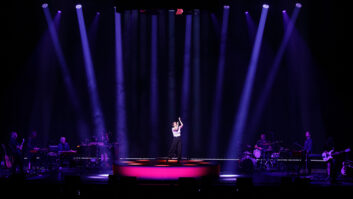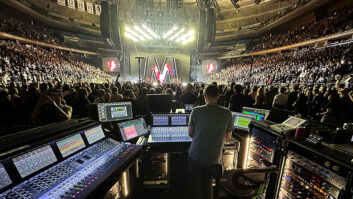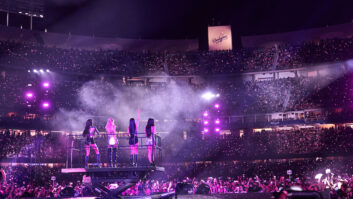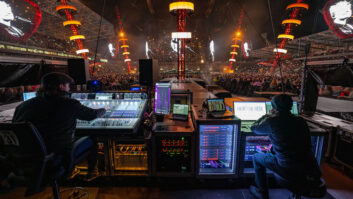New York, NY (November 6, 2019)—A mainstay of rock radio since the 1970s, Peter Frampton recently concluded his performance career with an arena-packing last run, dubbed Peter Frampton Finale – The Farewell Tour. Along for the ride to mix house nightly was FOH engineer, Jim Yakabuski, who oversaw a SSL Live L550 desk at each stop.
The tour marked Yakabuski’s first go-round with an SSL desk, following a few hours of one instruction from SSL’s Fernando Guzman. “The FOH mix on this tour could easily be done on a large-format analog console,” said Yakabuski, “but the previous FOH engineer and current monitor engineer decided to move it to digital for footprint reasons, and also ease of save/recall when using consoles brought in for private and one-off events.”
The METAlliance Report: Let’s Not Lose the Art in Engineering
Yakabuski eschewed using digital automation and other modern features, preferring to use the console making for its “sonic richness. It sounded so good, it removed the necessity to add on any external signal processing or plug-ins accessed via MADI connectivity. It became analog mixing all over again, on a console that offered me multiple options for routing and processing, but begged to be ‘left alone’ to simply sound great and blend great-sounding inputs from the stage.”
The desk was set up to provide to key input channels and output busses to suit Yakabuski’s personal workflow. With three tiles of 12 faders each, he managed the layers so that he was able to access any input channel or output mix from any layer on any tile.
His default ‘in-show’ layout saw Tile 3 (top left) managing input channels 1-12 for drums and bass on the first layer, with the second layer used for effects returns. Tile 2’s (bottom left) first layer handled input channels 13-24 for guitars and vocals, the second layer managed input channels 25-32 for keys, acoustic guitars, additional guitars and guests, while the third layer was used for playback devices and a pink noise generator, in addition for house and miscellaneous feeds. Meanwhile, Tile 1’s (bottom right) first layer handled VCA groups 1-12, layer two was used for the speaker system’s 1-12 matrix mixes, layer three managed Stems and ‘B’ matrix mixes (record sends), while layer four was utilized for aux-sends.
On the tour, all EQ and dynamics were SSL onboard-only. “Our daily approach always originated with tuning the entire sound system to be very consistent and optimized for the room with the same ‘flat’ transfer function response,” Yakabuski said. “With this palette to work with, I found that I didn’t need much in the way of channel EQ and compression to bring a channel up in the PA and have it sound great right out of the gate. Some high-pass filters and small EQ tweaks was about it. Light compression was also used – emphasis on light – and noise gates were almost non-existent as the dynamic range of the band was huge.”
Solid State Logic • www.solidstatelogic.com







